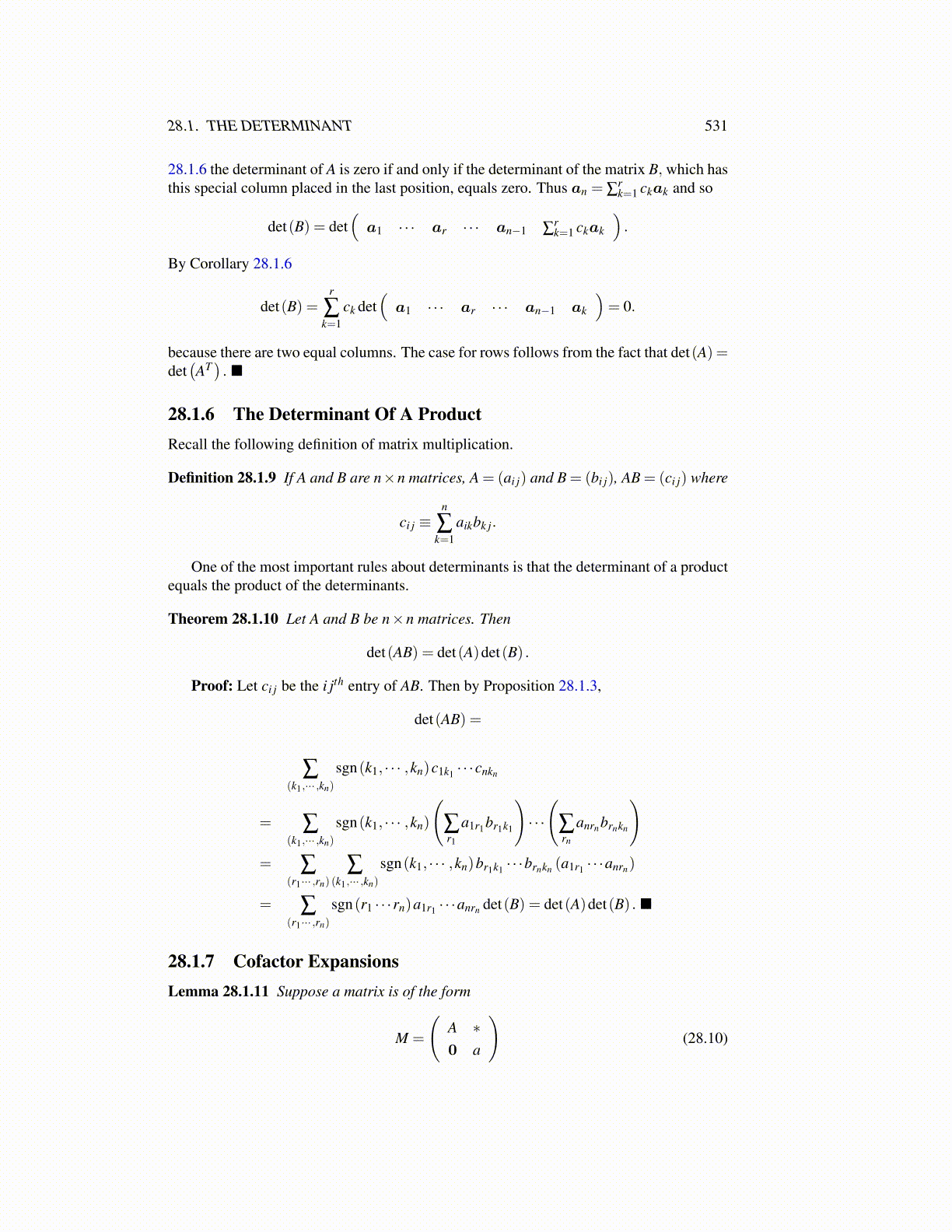
28.1. THE DETERMINANT 531
28.1.6 the determinant of A is zero if and only if the determinant of the matrix B, which hasthis special column placed in the last position, equals zero. Thus an = ∑
rk=1 ckak and so
det(B) = det(
a1 · · · ar · · · an−1 ∑rk=1 ckak
).
By Corollary 28.1.6
det(B) =r
∑k=1
ck det(
a1 · · · ar · · · an−1 ak
)= 0.
because there are two equal columns. The case for rows follows from the fact that det(A) =det(AT). ■
28.1.6 The Determinant Of A ProductRecall the following definition of matrix multiplication.
Definition 28.1.9 If A and B are n×n matrices, A = (ai j) and B = (bi j), AB = (ci j) where
ci j ≡n
∑k=1
aikbk j.
One of the most important rules about determinants is that the determinant of a productequals the product of the determinants.
Theorem 28.1.10 Let A and B be n×n matrices. Then
det(AB) = det(A)det(B) .
Proof: Let ci j be the i jth entry of AB. Then by Proposition 28.1.3,
det(AB) =
∑(k1,··· ,kn)
sgn(k1, · · · ,kn)c1k1 · · ·cnkn
= ∑(k1,··· ,kn)
sgn(k1, · · · ,kn)
(∑r1
a1r1br1k1
)· · ·
(∑rn
anrnbrnkn
)= ∑
(r1··· ,rn)∑
(k1,··· ,kn)
sgn(k1, · · · ,kn)br1k1 · · ·brnkn (a1r1 · · ·anrn)
= ∑(r1··· ,rn)
sgn(r1 · · ·rn)a1r1 · · ·anrn det(B) = det(A)det(B) . ■
28.1.7 Cofactor ExpansionsLemma 28.1.11 Suppose a matrix is of the form
M =
(A ∗0 a
)(28.10)